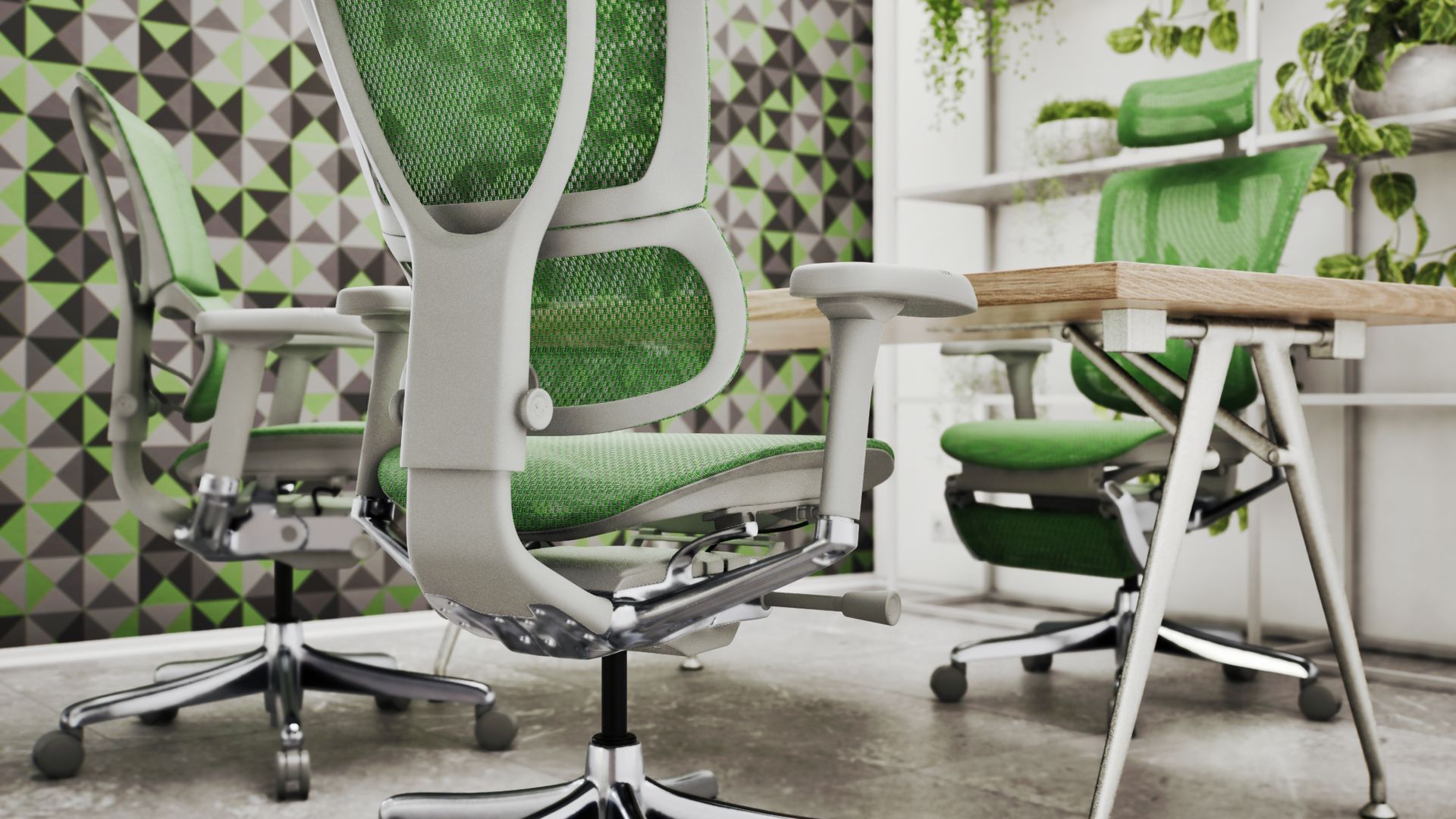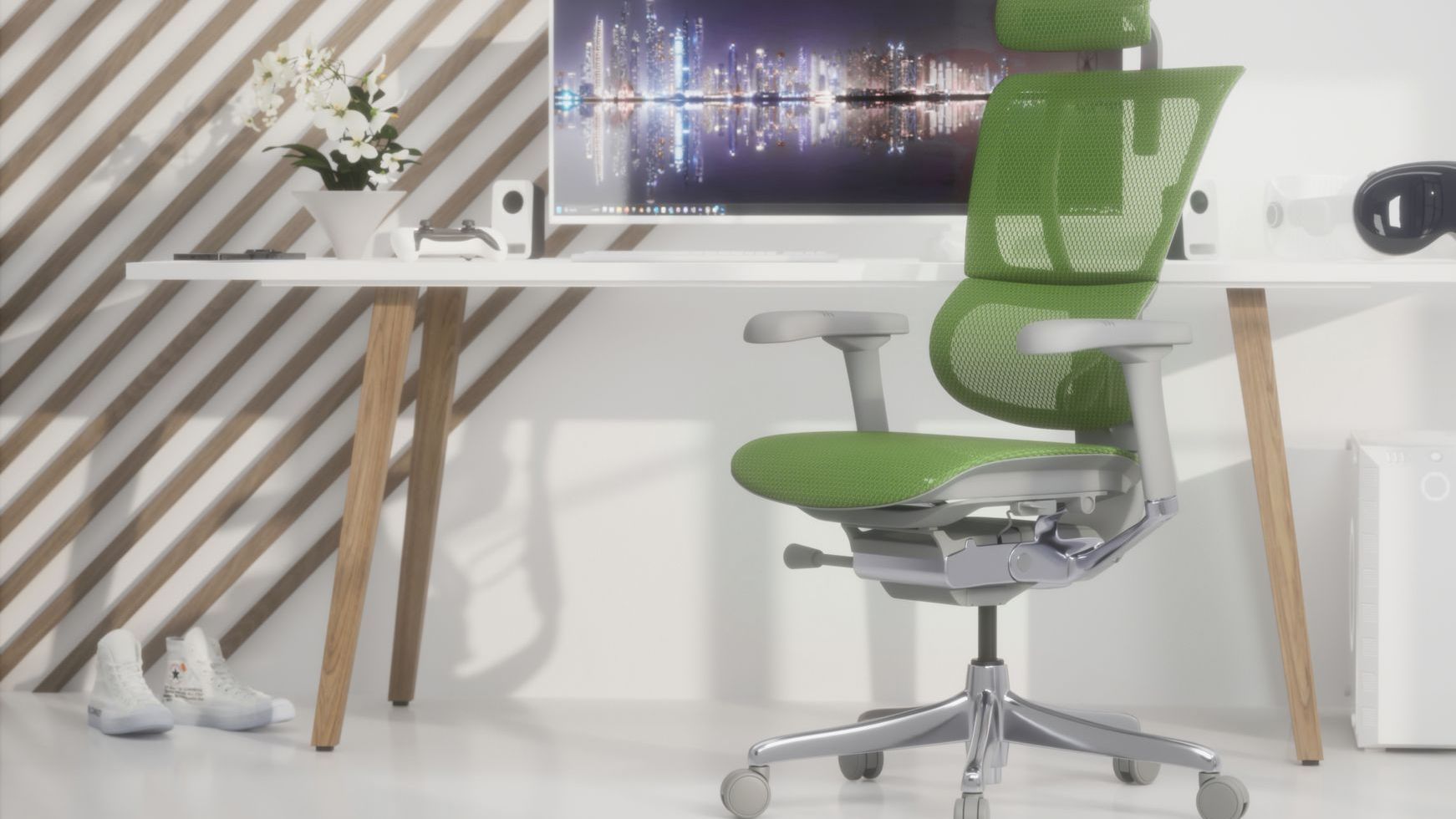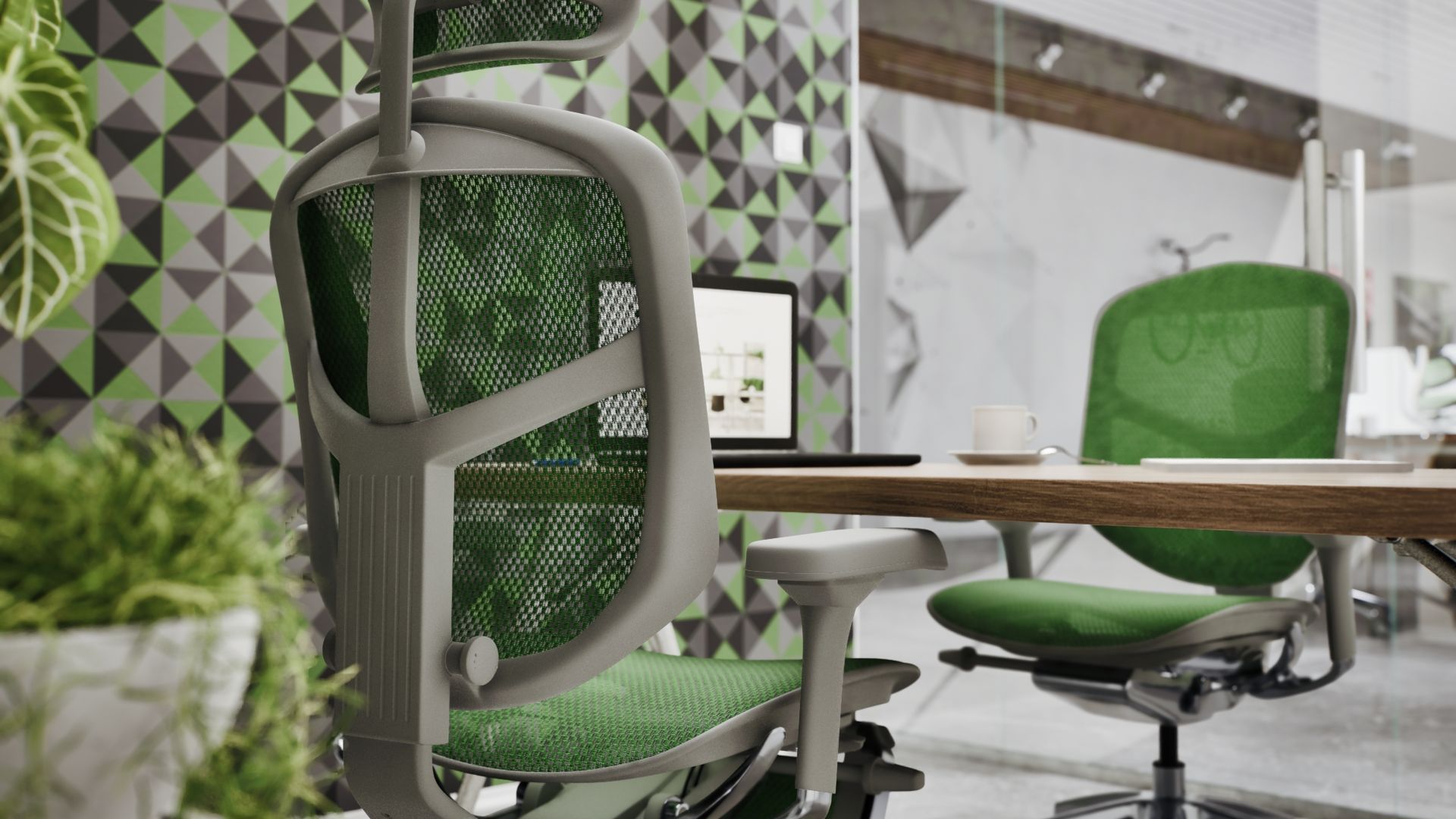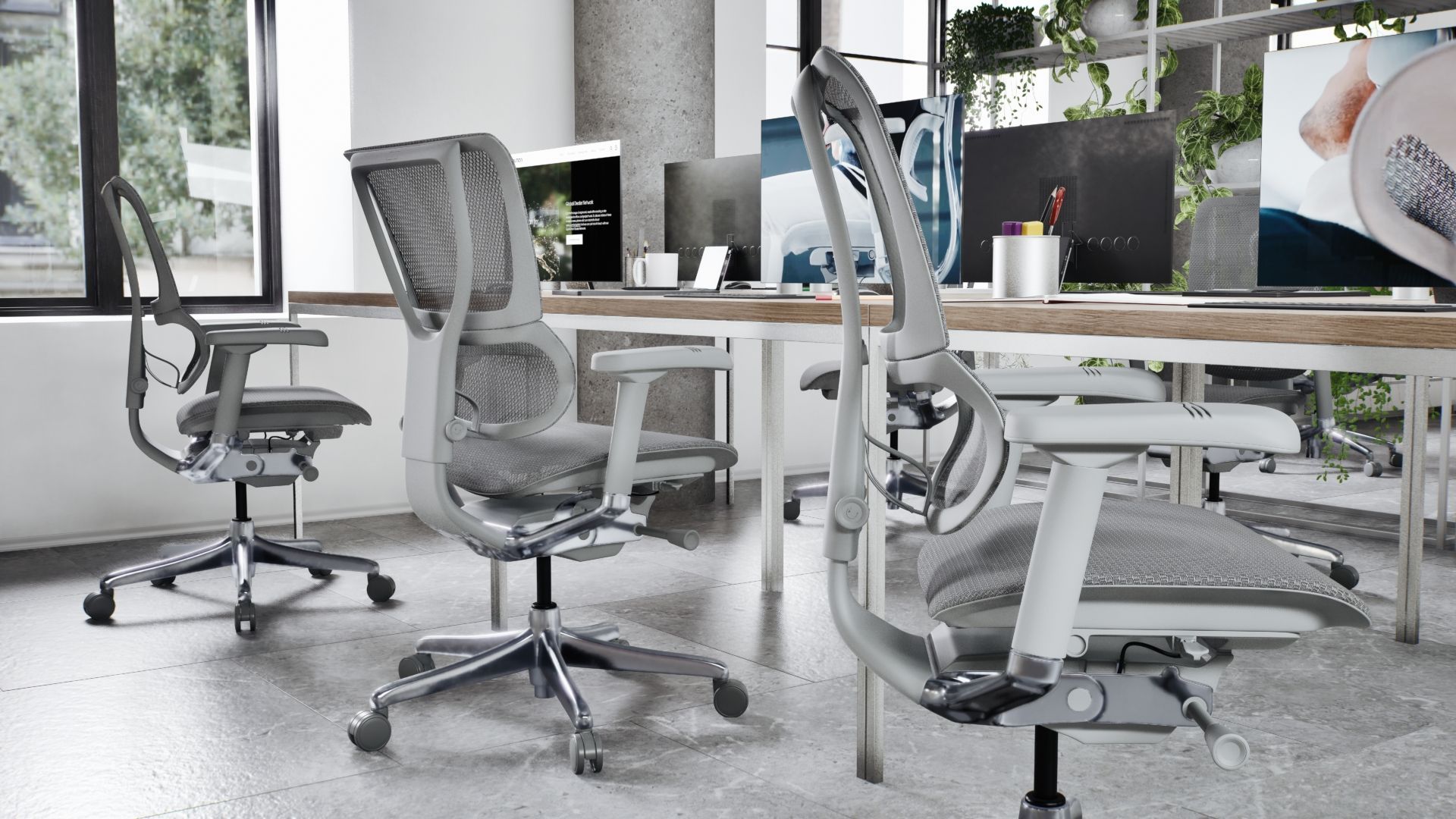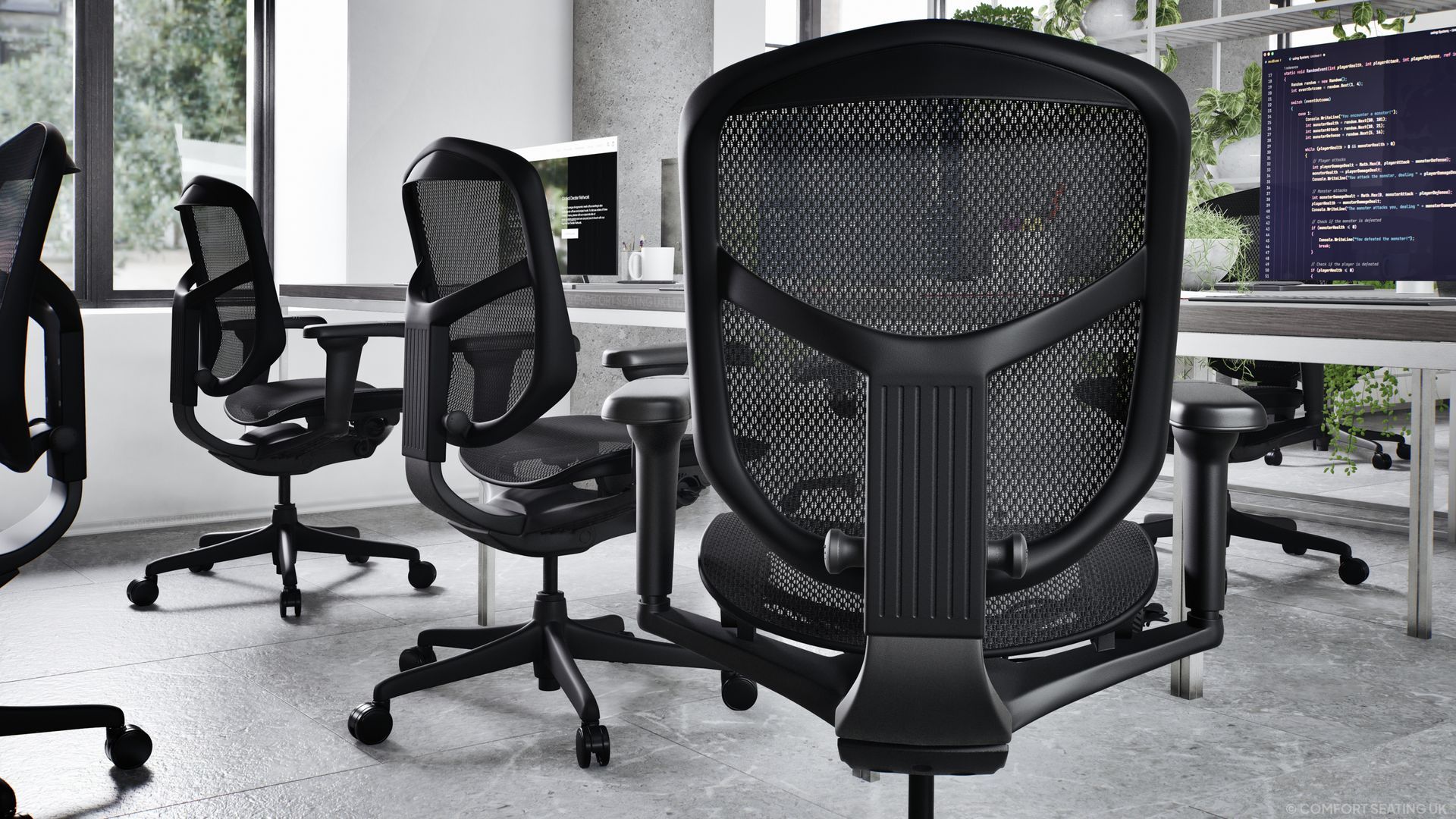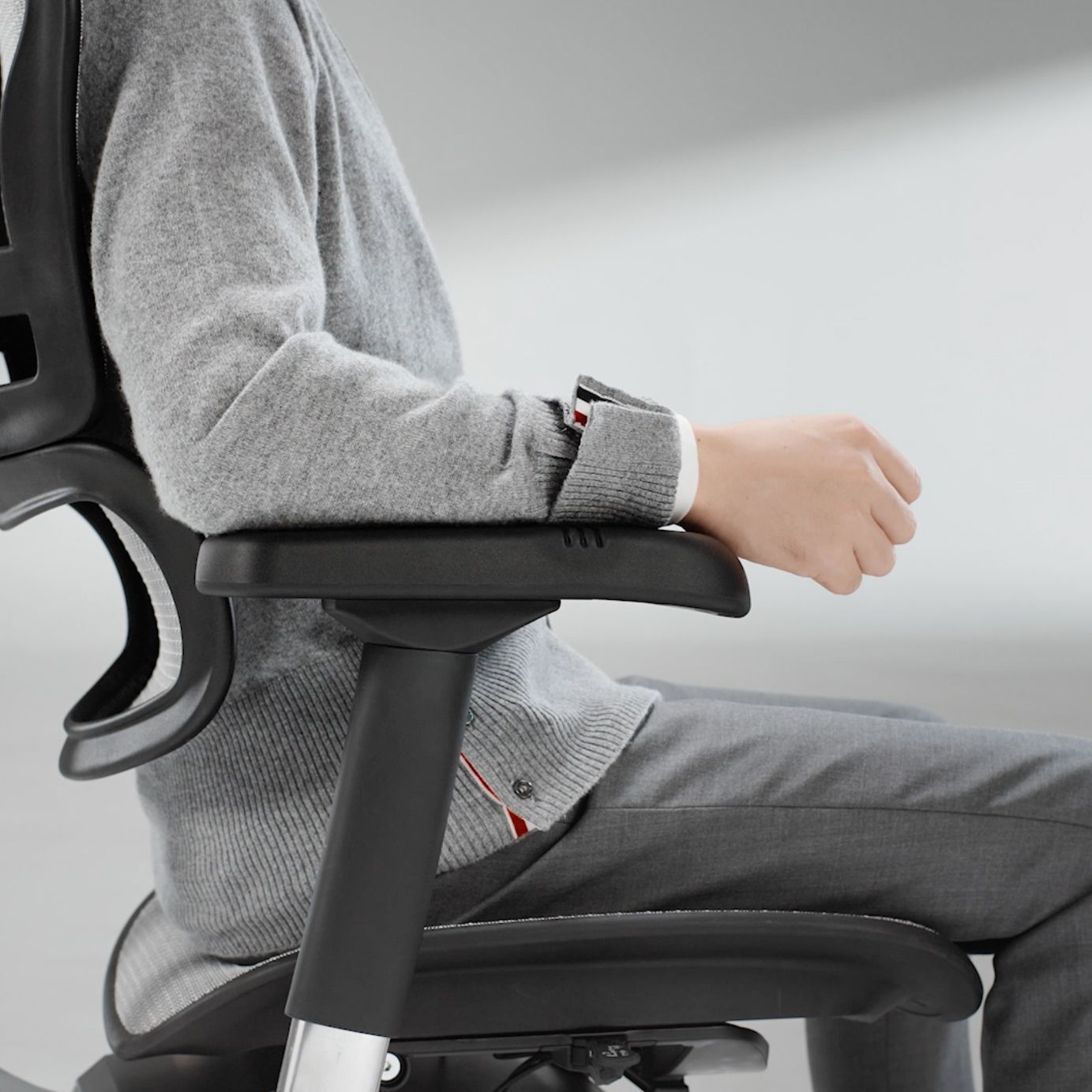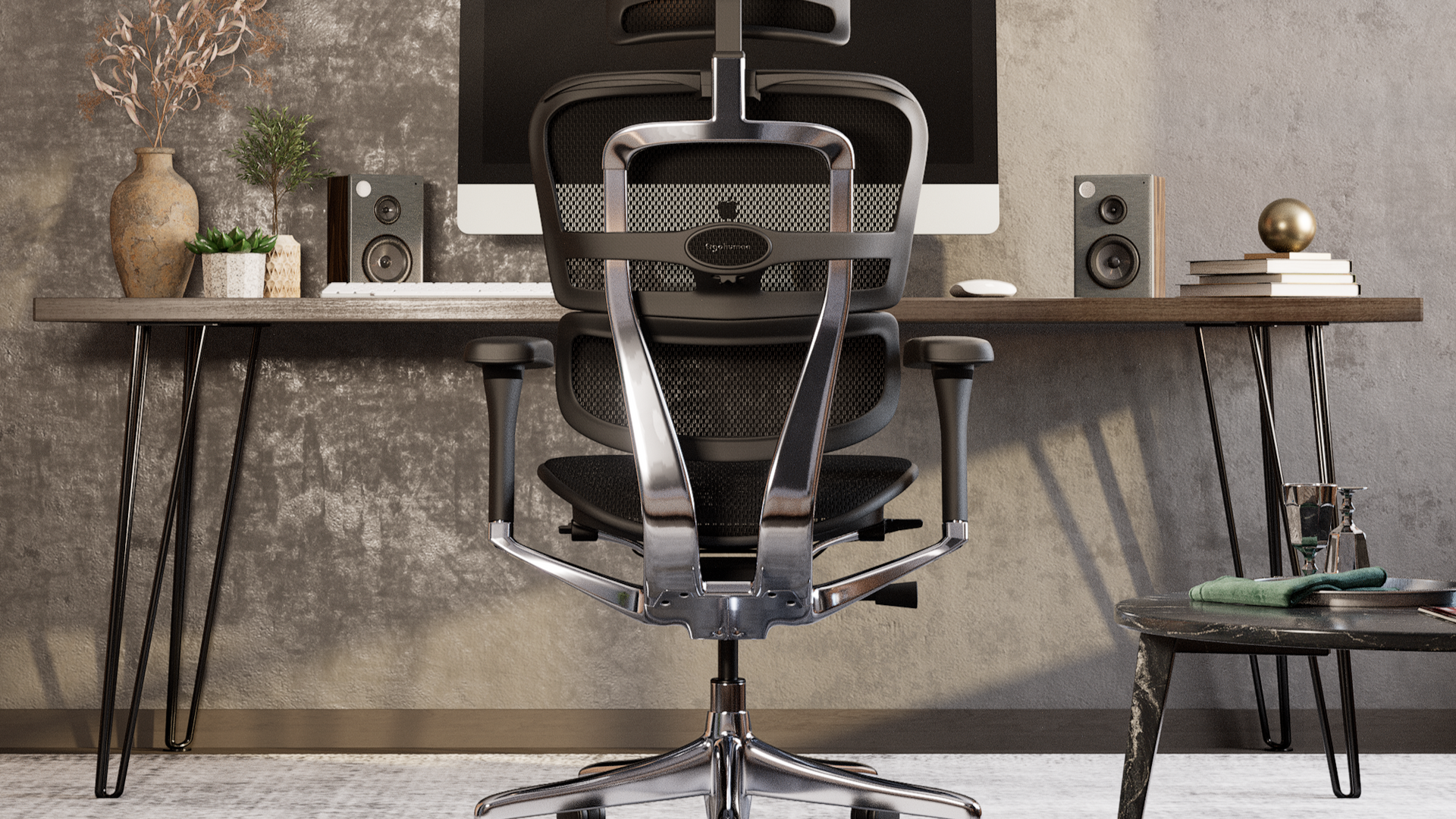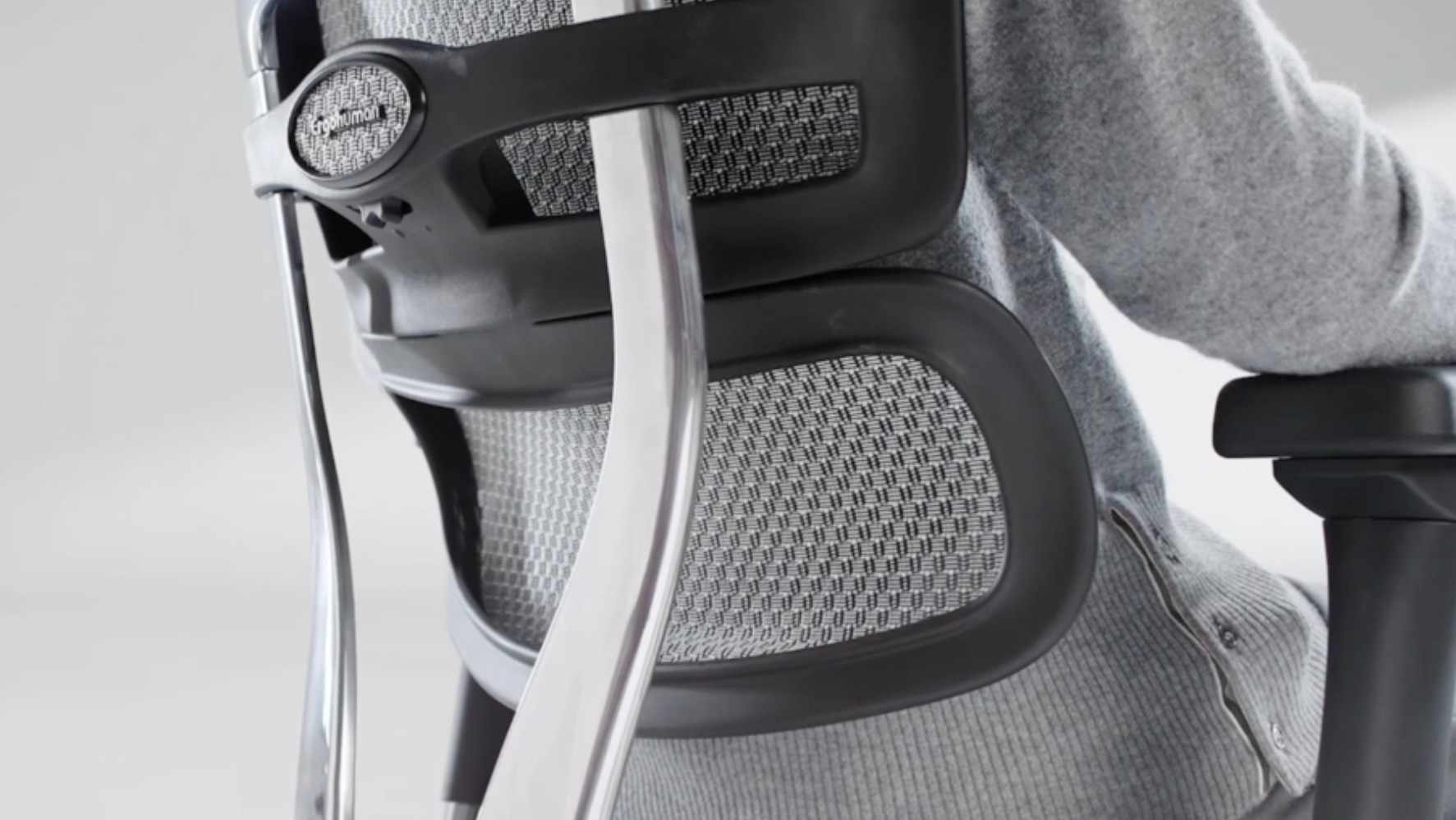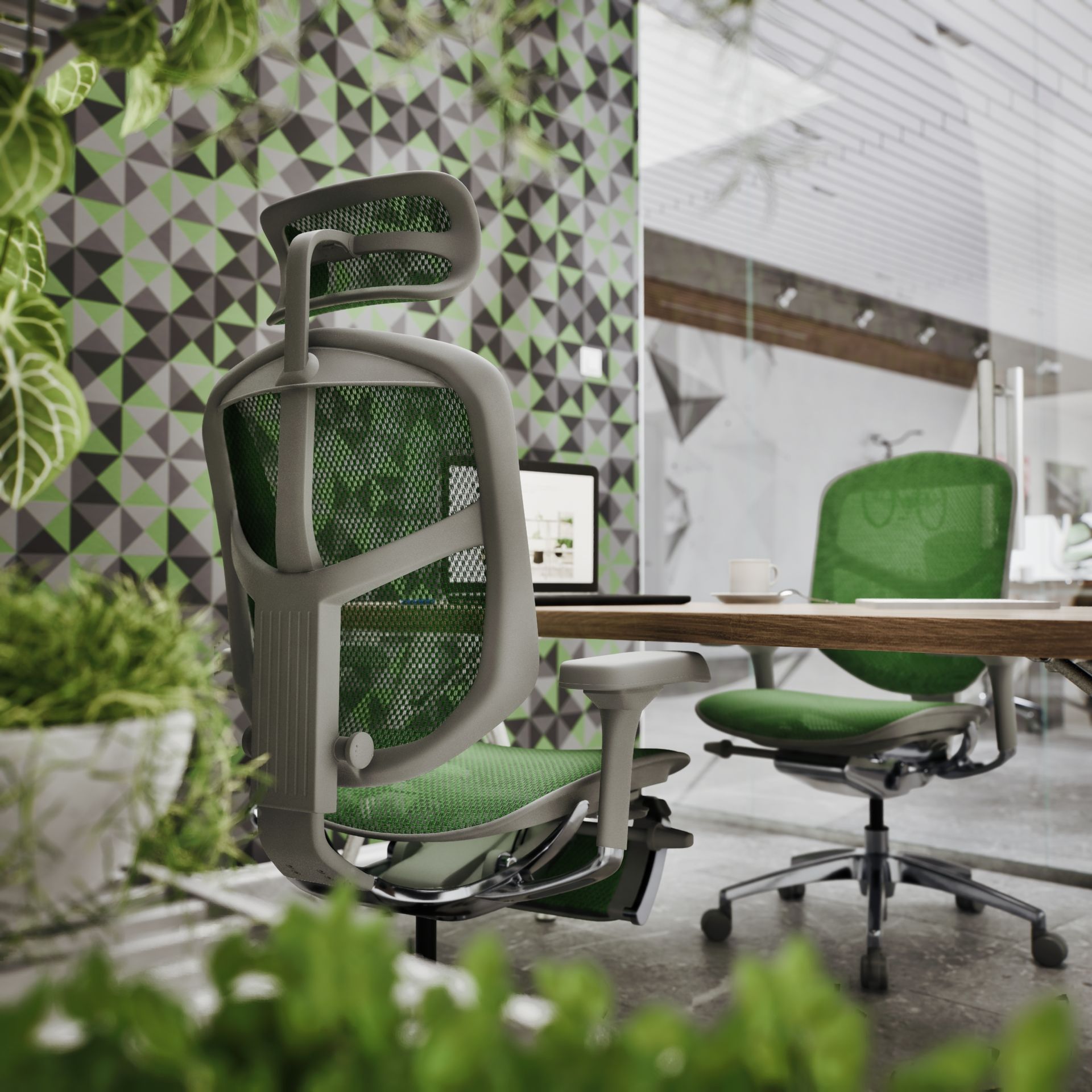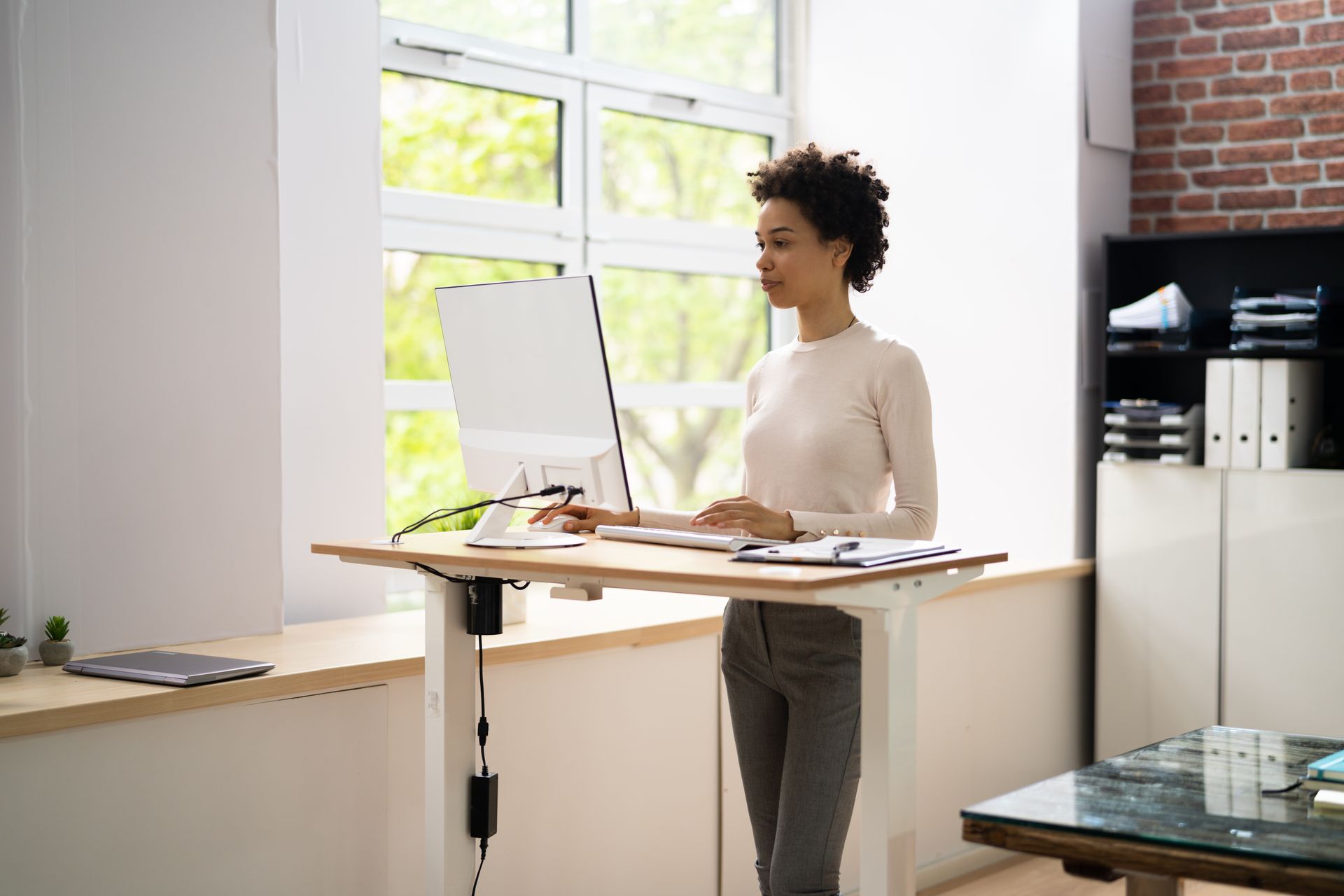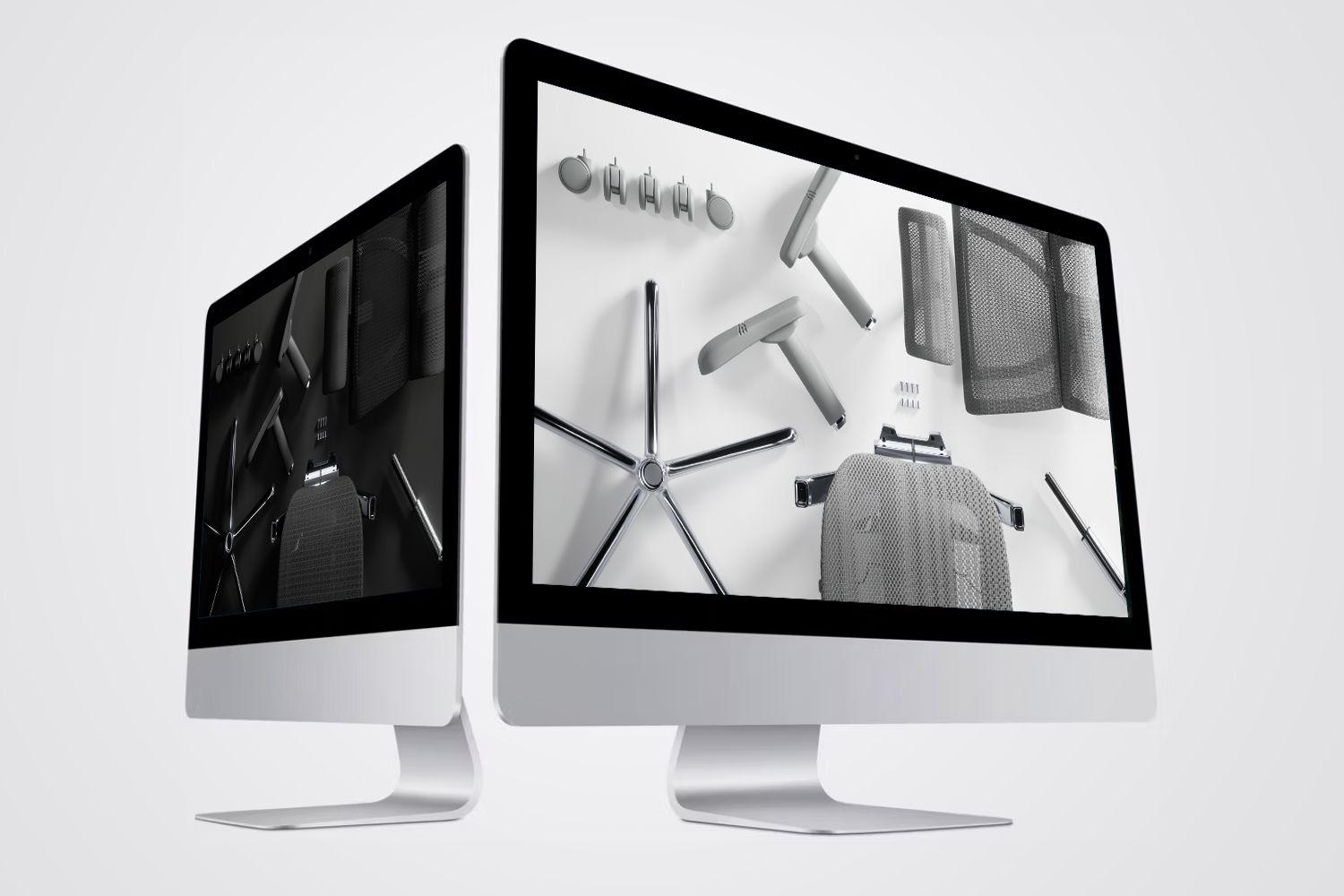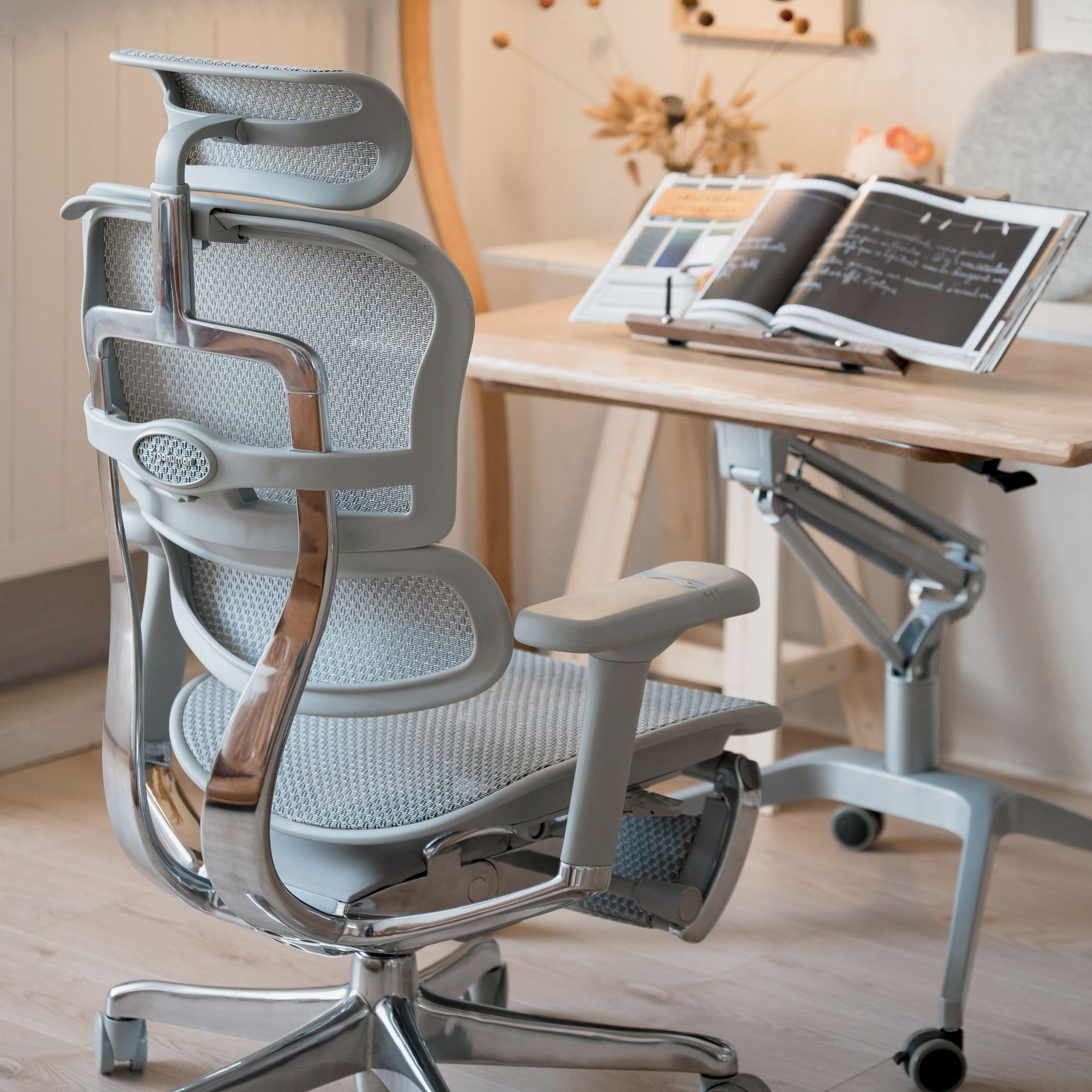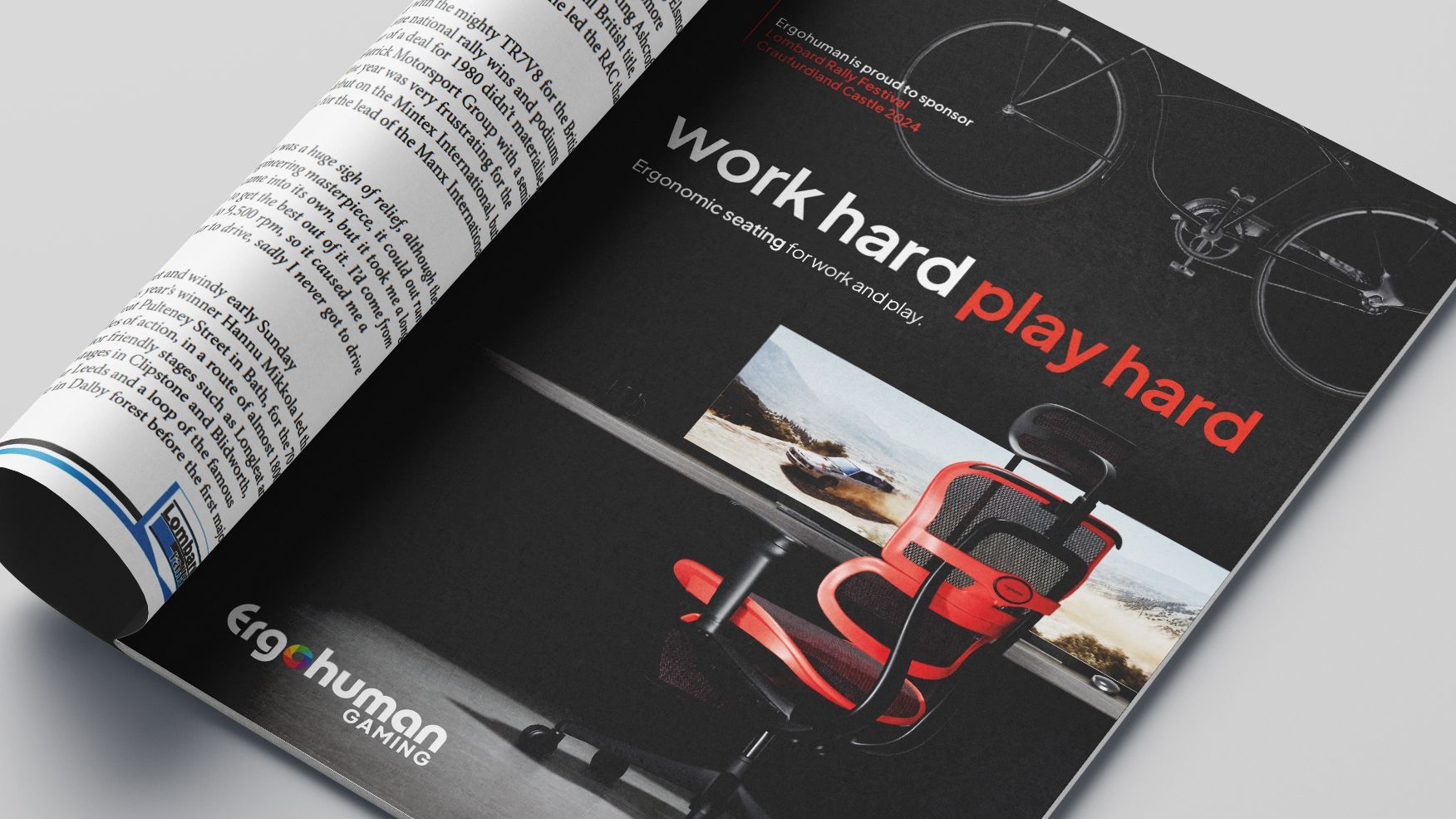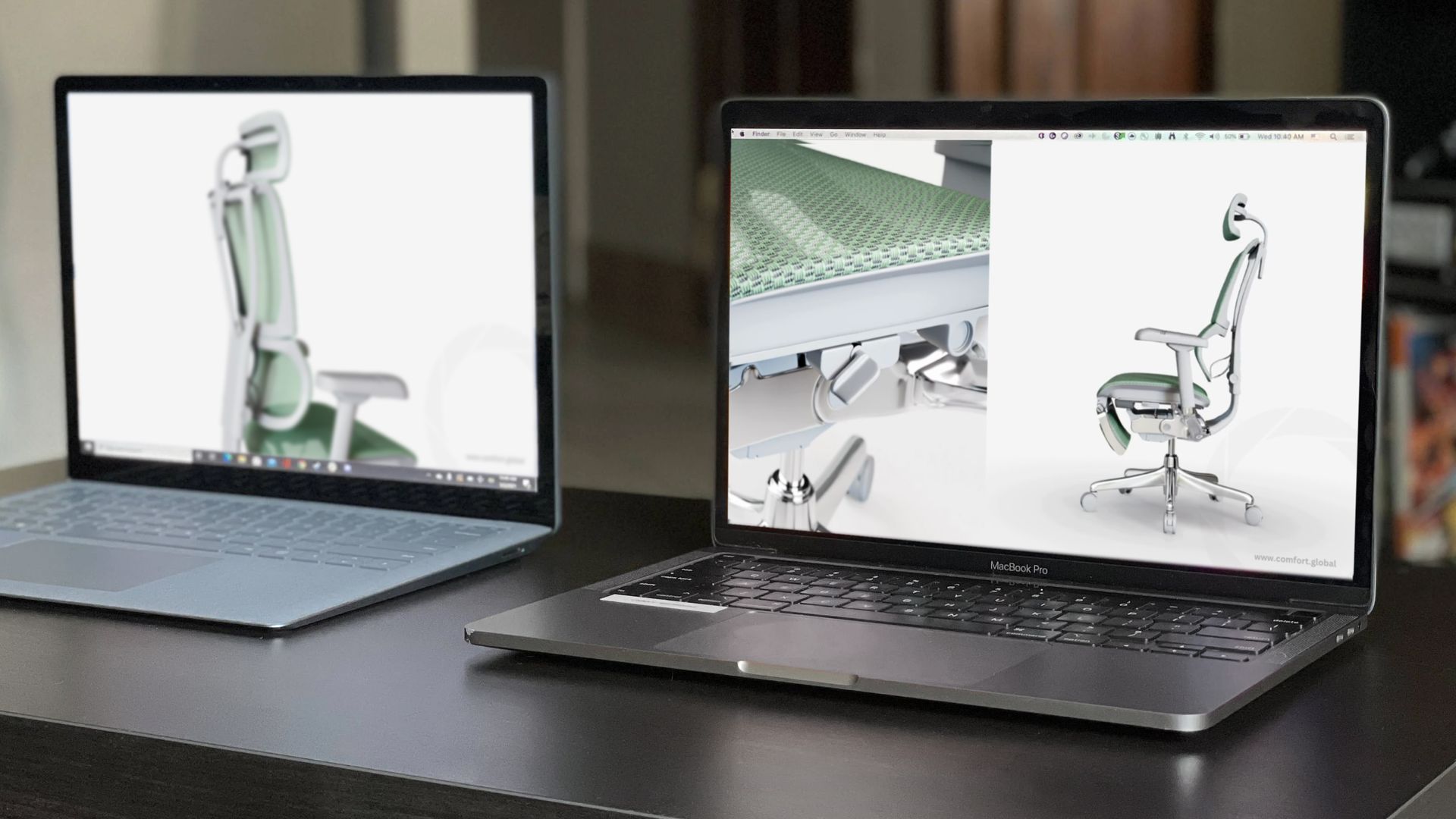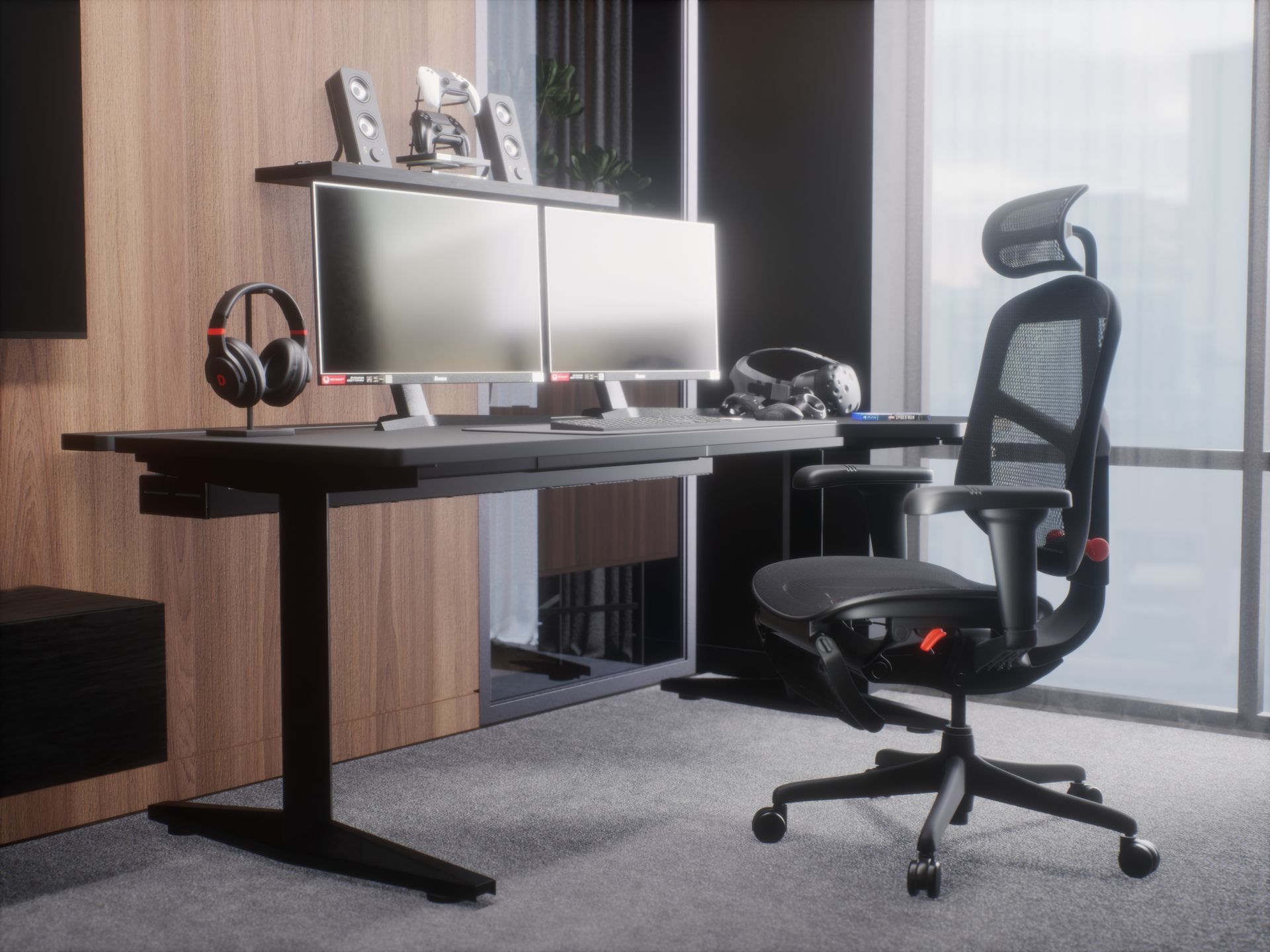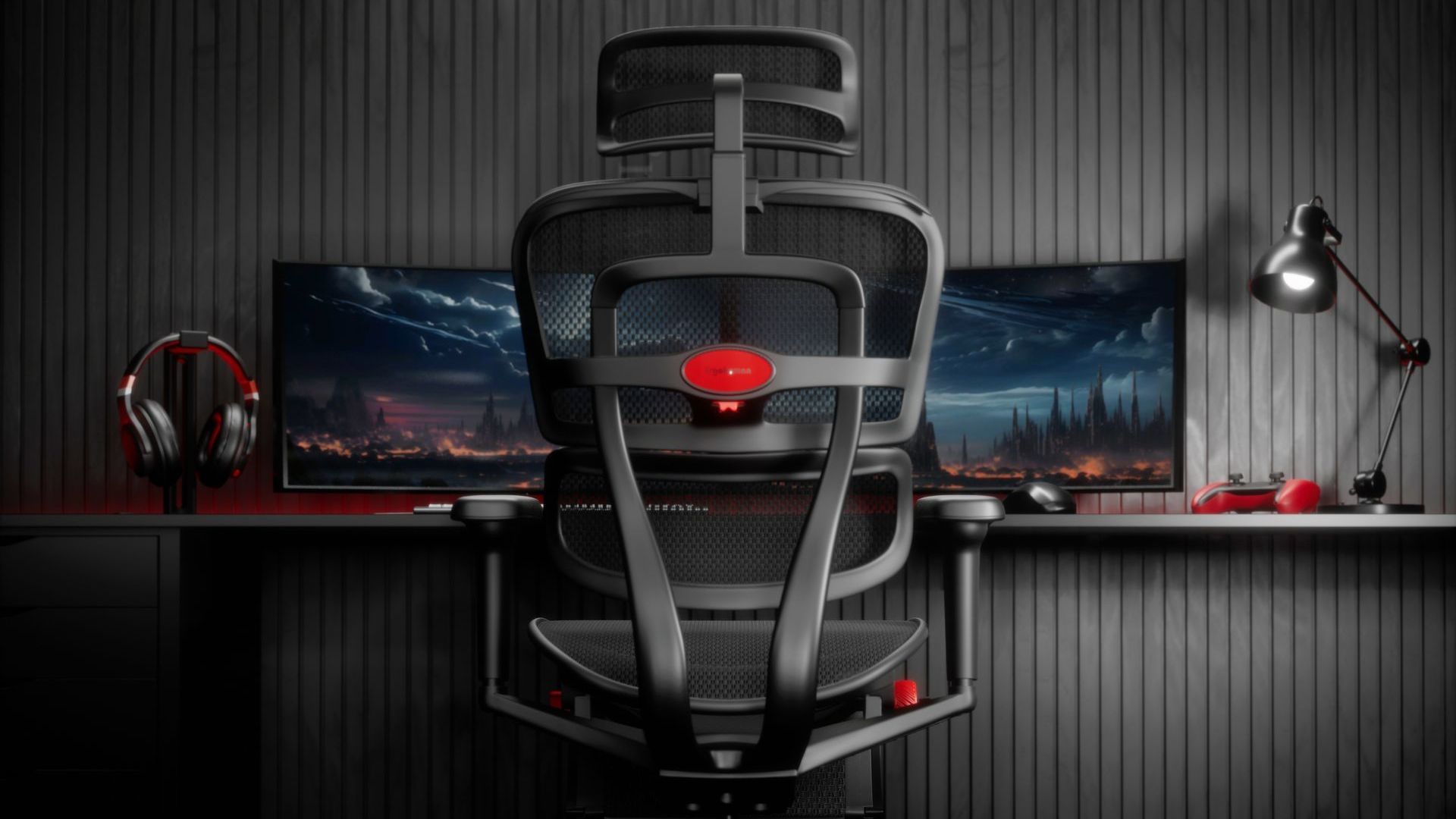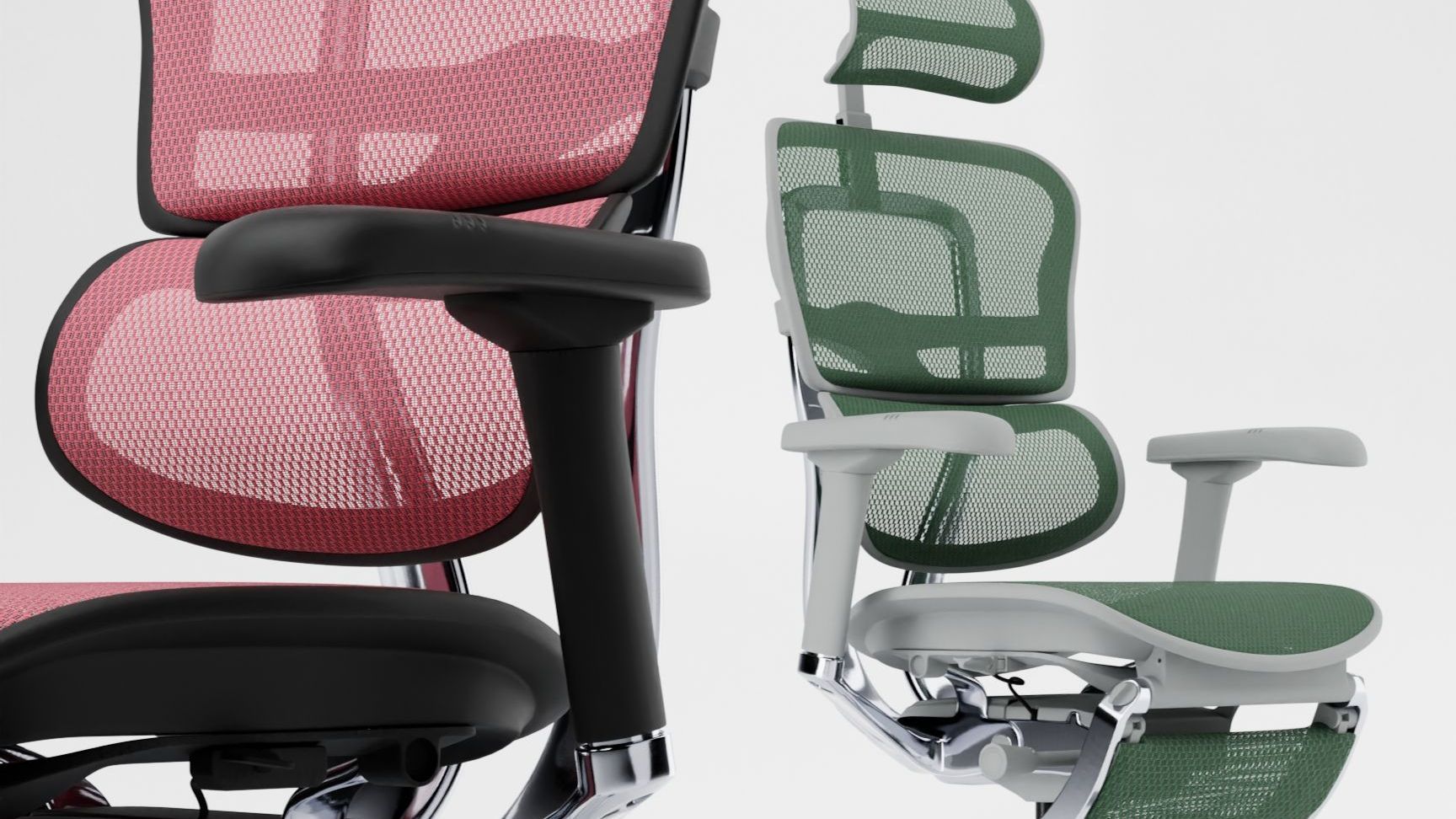Professional ergonomic assessments: an office perk
Remote work became a necessity and, for some, a delight during the pandemic. It offered a better work-life balance, saved people time commuting and, for many people, enhanced productivity. However, the statistics around whether working from home is beneficial are muddy. Many factors are at play, including the home office set-up, whether the employee enjoys the job, and the distractions at home.
The Society of Human Resource Management (SHRM) found that those with a hybrid working routine experience the best productivity⁽¹⁾. There's no doubt that remote working is an excellent option to offer employees, but many employers are seeking to encourage a return to the office.
One way to encourage more people to come into the office is to offer a unique advantage: professional ergonomic assessments. These assessments, conducted by trained specialists, ensure optimal comfort and efficiency in the workplace that employees wouldn't otherwise experience at home.
By investing in ergonomic solutions, employees demonstrate their commitment to their employee's well-being while developing a more appealing office environment. Discover how offering professional ergonomic assessments can improve productivity, prevent workplace injuries, and motivate employees to make their office return.
UNDERSTANDING ERGONOMIC ASSESSMENTS
An ergonomic assessment of a workplace, sometimes referred to as an ergonomic risk assessment, is a process in which a specialist evaluates a workplace to calculate the risk of musculoskeletal disorders and physical injuries. The ultimate goal is to ensure an employee's workstation contributes to well-being, productivity, and comfort. The evaluation focuses on the physical setup and how it interacts with an individual's work habits and physical needs. The key elements considered include:
Workstation setup
This includes the arrangement of desks, office chairs, monitors, keyboards, and other office equipment to ensure each piece is positioned to promote a natural posture.
Posture analysis
Specialists observe and correct the employee's posture while sitting and working. Healthy posture is crucial for preventing musculoskeletal disorders and improving overall comfort.
Equipment recommendations
Ergonomic assessors may recommend specific adjustments or new equipment to create a more user-friendly and health-conscious work environment.
Behavioural adjustments
Beyond physical changes, ergonomic assessors often give advice about healthy work habits and behaviours, including the suggestion of taking regular breaks, stretching exercises, and proper techniques for repetitive tasks.
By undergoing an ergonomic assessment, the specialists help to create a workspace that minimises physical strain and maximises efficiency. The benefits include reduced risk of injury, improved posture, enhanced comfort, and greater productivity.
For employers, providing professional ergonomic assessments demonstrates a commitment to employee health and safety. Not only does this help retain top talent, but it encourages remote workers to return, knowing their work environment is tailored to their needs.
Benefits of a workplace assessment
Ergonomic assessments go beyond a cursory glance at the workstation. Specialists conduct thorough evaluations and consider various elements, including desk height, chair support, monitor placement, and lighting. They ensure that every aspect of the work environment supports proper ergonomics.
Healthy Work, a provider of ergonomic assessments, finds that by addressing ergonomic issues proactively, specialists can help prevent common workplace injuries, such as carpal tunnel syndrome, back pain, and eye strain⁽²⁾. This benefits employee's health while reducing absenteeism and healthcare costs for employers.
When a workstation is ergonomically optimal, employees experience enhanced comfort, reduced fatigue, and better focus on tasks. When an employer shows commitment to their employees' job satisfaction, employee morale and retention rates improve.
According to the SHP, a shocking 40 per cent of workers don't feel that their employer supports their physical and mental well-being⁽³⁾. Improving this is crucial, as the International Journal of Environment Research and Public Health published findings that the more ergonomic a workspace is, the more satisfied workers are⁽⁴⁾.
THE HOME OFFICE CHALLENGE
Many offices and employers have partnerships with ergonomic specialists or in-house experts who can evaluate a workspace periodically, ensuring ongoing comfort. When people work from home, they cannot access these same high-quality and important assessments. Instead, they might rely on generic advice or self-assessment. They could hire an ergonomic consultant privately, but the high cost may be off-putting.
Beyond that, investing in ergonomic furniture and equipment – such as ergonomic chairs, adjustable desks, and proper lighting – is expensive. Without employer support or reimbursement, many remote workers find themselves in an uncomfortable and unsupportive workspace.
According to The Home Office Life, only 28 per cent of remote workers work from their studies⁽⁵⁾. The other 72 per cent work from their living room, bedroom, dining room, hallway, and bathroom, where a truly ergonomic set-up is nearly impossible.
Findings by Justine M. Y. Chim – a Certified Professional Ergonomist – and Dr Tien-Li Chen – a professor at the National Taipei University of Technology in Taipei – report statistics on home workstation setups:
- 32.8 % work in the living area⁽⁶⁾.
- 40.9 % work at a dining table.
- 34.1 % use a dining chair.
- 20 % do not use a proper chair; instead, they use a bench with no back support, a folding chair, a sofa, an armchair, or a child-sized chair.
- 4.3 % work on the floor or their bed.
- Only 12.9 % of remote workers use desktop monitors as display screens.
- 61.2 % of remote workers reported musculoskeletal discomfort.
- Remote workers who used a chair without a backrest or sofa were 2.8 times more likely to suffer from musculoskeletal discomfort.
Poor ergonomics can have serious long-term consequences. Without an adequate ergonomic chair, a desk that is correctly suited to the worker, and proper monitor positioning, workers can experience a range of health issues. This includes musculoskeletal disorders, chronic back pain, and repetitive strain injuries. Not only can this affect well-being, but it can also lead to decreased productivity and increased absenteeism.
HOME OFFICE Vs. OFFICE: COMPARISONS
Forbes reports that flexible and hybrid working is the key to optimal productivity. Workers with full-schedule flexibility are 29 per cent more productive and 53 per cent more focused than people who cannot adjust their schedule⁽⁷⁾. A two-year survey conducted by Great Place to Work found that remote working during the pandemic boosted productivity by 6 per cent on average. On the other hand, remote working isn't suitable for everyone. For instance, a University of Chicago research paper found that 14 per cent of respondents were less productive when working from home⁽⁸⁾.
A hybrid working schedule is best, as it offers different benefits to individuals. For instance, those who work in call centres take fewer sick days because they can still complete their job at home while feeling under the weather. However, going into the office is greatly beneficial for some people due to the following reasons: it prevents loneliness and isolation; it encourages networking; it helps employees understand the brand they work for; employees have access to the right equipment; it can improve work-life balance; and it's easier to schedule meetings.
A
Nature editorial reports that hybrid workers have the best job satisfaction, lowest resignation rates, and best productivity rates⁽⁹⁾. With so many people wanting to work from home, though, how do you encourage more people to return to the office? One key component is comfort.
Encouraging office return with comfort and ergonomics
Ergonomic office setups play a crucial role in employee retention, with 93 per cent of tech industry workers reporting that they would stay longer in a job if a healthy workspace is provided⁽¹⁰⁾. This includes various options, including sit-stand desks, ergonomic seating, and wellness rooms. A Gallop poll found that 61 per cent of job candidates look for a workplace that cares about their well-being⁽¹¹⁾.
With a heightened sense that an employee cares for their staff's well-being, satisfied employees are likely to remain with their employees for longer. Moreover, ergonomic interventions reduce the chance of musculoskeletal disorders, a common cause of workplace absenteeism. Fewer sick days result in more consistent staffing, better turnover, and overall organisational stability.
Creating an ergonomic office can encourage employees to return to the office. The setup should include:
Adjustable desks
Sit-stand desks allow employees to switch between sitting and standing, which can reduce discomfort, improve posture, and encourage better blood flow.
Ergonomic office chairs
Chairs with adjustable height, lumbar support, and armrests – such as Ergohuman Elite – make working from the office much more comfortable. Such chairs support proper posture and reduce back strain.
Keyboard trays
Adjustable keyboard trays ensure the keyboard and mouse are positioned comfortably, reducing strain on the wrists and shoulders.
Monitor stands
Adjustable monitor stands or arms allow employees to position screens at eye level, reducing neck and eye strain.
Footrests
Adjustable footrests support proper leg positioning and encourage good posture, especially when employees are seated for long periods during the working day.
Task lighting
Proper lighting, including adjustable desk lamps with glare-free features, can reduce eye strain and improve visibility.
Ergonomic mouse
An ergonomic mouse designed to fit the hand comfortably can reduce strain and prevent repetitive stress injuries.
Noise-cancelling headphones
High-quality headphones can help employees focus by reducing ambient noise and enhancing concentration and productivity, especially in busy, high-traffic offices.
Break areas with comfortable seating
Providing lounge furniture in break areas allows employees to recharge and relax in a comfortable place.
By investing in these ergonomic features and furniture, companies strive to create a more comfortable and supportive work environment. As a result, this can motivate employees to commute into the office and it can improve overall job satisfaction.
HOW COMFORT'S ERGONOMIC OFFICE CHAIRS IMPROVE WELL-BEING
Our ergonomic office chairs are recommended by occupational therapist and workplace assessors. For employers who want to encourage a return to the office, the Ergohuman office chairs will help you improve workplace assessment results. We offer professional seating solutions for every workspace, whether you're a large corporation, a small and midsize enterprise, or part of the public sector.
Comfort's cutting-edge ergonomic office chair collection is tested to meet or exceed BS 1335 and BS 5459 standards, ensuring they stand the test of time, even in the busiest offices. Our ergonomic mesh office chairs are designed to encourage employee well-being and foster a productive and healthy environment.
Our office chairs – including Ergohuman, Mirus, and Enjoy Elite – offer extensive features that ensure each individual can find their ideal set-up. Adjustability includes: seat height, seat depth, back height adjustment, adjustable lumbar support, free-float recline with tension control, lockable recline, 5D adjustable armrests, and a synchronised forward seat tilt. An optional headrest and legrest completes the chair. All features have generous adjustability so you can calibrate the settings to suit your needs, height, and style of working.
When employees are comfortable in their office chairs, they are less distracted by discomfort and strain. This enables them to focus on their work, resulting in a more productive and profitable work experience.
FREQUENTLY ASKED QUESTIONS:
ergonomics and workplace assessments
-
What is the definition of ergonomics?
The Merriam-Webster definition of ergonomics is 'an applied science concerned with designing and arranging things people use so that people and things interact most efficiently and safely'. In other words, it's understanding how people interact with products, processes, and environments. To ensure safe, comfortable, and efficient experiences, ergonomic design exists to create better working methods. As a result, workplaces and interiors are arranged to fit the people who use them.
-
What is ergonomic furniture?
Ergonomic furniture, such as ergonomic office chairs, is designed to provide support, adjustability and comfort. It reduces the risk of pain, strain, arthritis, restricted organs, and poor blood flow. Ergonomic furniture should allow natural movement, support the natural S-posture rather than forcing a C-posture, and be easily adjustable.
Quality ergonomic furniture balances form and function, with the promise of enhancing the user's well-being and overall comfort.
-
What does an ergonomic workplace assessment include?
Ergonomic workplace assessments include important factors to ensure employees are safe and can work efficiently. Assessors will analyse tasks to ensure employees can manage them without health risks. They will evaluate the equipment used for tasks to ensure they align with job requirements.
Assessors will consider the size, weight and position of equipment to ensure they are suited to employees' needs. They will also evaluate how information is presented and accessed to streamline processes, and they will assess lighting, noise levels, humidity, and temperature to conclude whether the environment supports employee well-being and focus.
Assessment of office chairs will include an evaluation on how to adjust the chair to support individual needs, allow movement, adjust angles, set the sitting position to suit the work surface, ensure the gas stem height accommodates users of varying heights, and position the armrests to prevent repetitive strain injuries as well as neck and shoulder problems.
-
How long should you sit in an ergonomic chair?
An ergonomic chair is often certified for all-day use, but you should still schedule frequent breaks. According to a report by PhysioMed, you should aim to stand or move for a few minutes every 20 to 30 minutes⁽¹²⁾. Standing for even 20 seconds can prevent adverse effects such as back and neck pain.
Encouraging employees to return to the office with ergonomics
Professional ergonomic assessments offer numerous benefits that can significantly improve workplace health and productivity. By utilising trained professionals' expertise, such assessments ensure comprehensive evaluations of workstation setups, leading to more personalised and effective ergonomic solutions. Taking a proactive approach to preventing workplace injuries, improving employee comfort, and boosting productivity demonstrates a solid commitment to employee well-being.
The office setting provides access to these professional assessments, regular evaluations, and tailored ergonomic solutions that are often unavailable for remote workers. This includes proper ergonomic seating solutions, such as the Ergohuman office chair, which may be out of budget for one's work-from-home setup. By creating a work environment that prioritises health and comfort, employers can significantly improve employee satisfaction and retention.
Employers should invest in professional ergonomic assessments and quality ergonomic furniture to showcase their dedication to employee health. This investment will enhance one's workplace experience while serving as an incentive for employees to return to the office.
Contact us for enquiries and orders and transform your workforce today.
OTHER
POSTS
Comfort Seating UK Ltd
Riverbank Mill
2 Stoneygate Road
Newmilns, Ayrshire

